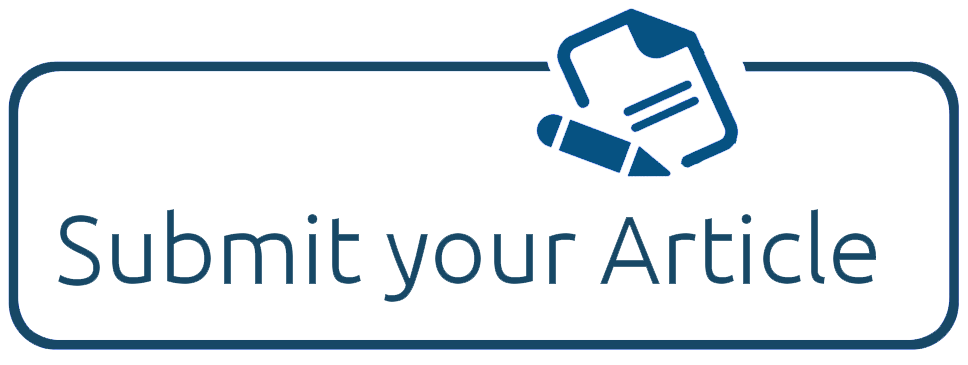ANALISIS KEMAMPUAN PEMECAHAN MASALAH MATEMATIS PADA SOAL SETARA INSTRUMEN TIMSS UNTUK SISWA SMP NEGERI 1 MASOHI
Abstract
Mathematical problem solving ability is one of the abilities that must be mastered by students in order to be able to mathematically solve problems often found in real life. The purpose of this study was to describe students' mathematical problem solving abilities on the volume of cubes and blocks equivalent to the TIMSS instrument. The research subjects are five students of class IX science at SMP Negeri 1 Masohi who were selected based on the category of problem solving ability. This type of research is a qualitative descriptive research supported by quantitative data. The data obtained from this study is data on mathematical problem solving ability tests such as written tests and interviews. The results show that students with very high abilities are able to interpret problems well, interpret strategies and problem-solving steps accaording to the plan, and consistently check back. Students with high abilities are able to apply the four steps in solving ploblems even though there are some questions that students make mistakes in setting strategies and substituting scores at the completion stage. Students with moderate abilities sometimes make mistakes in setting a strategy, make calculation errors, and do not check back to the maximum so that they get inaccurate results. Meanwhile students with low abilities unable to meet the completeness of the stage of understand the problem is writing down the things that are known and asked. As for students with low abilities cannot solve problems completely because of poor planning. Making mistakes in calculations and not checking again so that they do not get the right results
Downloads
References
Abdussakir. 2009. Pembelajaran Geometri Sesuai Teori Van Hiele. Jurnal Madrasah. Volume II, Nomor 1, Tanggal 1 Juli – Desember 2009.
Adi Pribadi, Somakim, M. Yusuf. 2017. Pengembangan Soal Penalaran Model TIMSS Pada Materi eometrid an Pengukuran SMP. Jurnal Pendidikan Matematika Universitas Sriwijaya, Volume 1, Nomor 2, September 2017.
Astutiani Risma dkk. 2019. Kemampuan Pemecahan Masalah Matematika dalam Menyelesaikan Soal Cerita Berdasarkan Langkah Polya. Seminar Nasional Pascasarjana UNNES. ISSN: 2686-6404.
Cahyani H, Setyawati Ririn. 2016. Pentingnya Kemampuan Pemecahan Masalah Melalui PBL untuk Mempersiapkan Generasi Unggul Menghadapi MEA. Seminar Nasional X Universitas Semarang.
Depdiknas. 2007. Kajian Kebijakan Kurikulum Mata Pelajaran Matematika. Jakarta: Depdiknas.
Kemendikbud. 2014. Paparan Menteri Pendidikan dan Kebudayaan RI, Press Workshop:Implementasi Kurikulum 2013. Jakarta: Kemendikbud.
Mataheru W. 2019. Proses Kognitif Dalam Pemecahan Masalah. CV ALFABETA. Bandung
Mullis, Ina V. S., Martin, Michael O., Foy, P., & Arora, A. 2012. TIMSS 2011 International Results in Mathematics. Chesnut Hill, MA: TIMSS & PIRLS International Study Center, Boston College.
Nizam. 2016. Ringkasan Hasil-hasil Asesmen Belajar Dari Hasil UN, PISA, TIMSS, INAP. Puspendik
Novitasari. Wilujeng H. 2018. Analisis Kemampuan Pemecahan Masalah Matematika Siswa SMP Negeri 10 Tangerang. Jurnal Pendidikan Matematika. Volume 2 Nomor 2. Banten
Pratiwi I dkk, 2016. Pengembangan Soal Matematika Berkarakteristik TIMSS Tipe Pemecahan Masalah Pada Topik Geometri Pengukuran Volume Kubus dan Balok Kelas VIII. Jurnal Pendidikan Matematika. Volume 2 Nomor 2. Sriwijaya
Purnamasari I, Setiawan W. 2019. Kemampuan Pemecahan Masalah Matematis Siswa SMP Pada Materi SPLDV Ditinjau Dari Kemampuan Awal Matemaika (KAM). Journal of Mathematics Education IKIP Veteran Semarang Volume 3, No. 2
Rambe A. Y. F dan Afri L. D. 2020. Analilis Kemampuan Masalah Matematis Siswa Dalam Menyelesaikan Soal Materi Barisan Dan Deret. Jurnal Pendidikan Matematika. Volume 9 Nomor 2.
Ratumanan, T. G dan Laurens, T. 2015. Penilaian Hasil Belajar Pada Tingkat Satuan Pendidikan. Yogyakarta: Pensil Komunika
Safrina Khusnul dkk. 2014. Peningkatan Kemampuan Pemacahan Masalah Geometri Melalui Pembelajaran Kooperatif Berbasis Teori Van Hiele. Jurnal Didaktik Matematika: Banda Aceh.
Shodiq, Dafik, Made Tirta. 2012. Analisis Soal Matematika TIMSS 2011 dengan Indeks Kesukaran Tinggi Bagi Siswa SMP. Jurnal Pasca Sarjana Pendidikan Matematika FKIP Universitas Jember
Triyono. 2017. Metodologi Penelitian Pendidikan. Penerbit Ombak. Yogyakarta
Zauri Ahmad. 2017. Peningkatan Kemampuan Pemecahan Masalah dan Koneksi Matematis Siswa SMP dengan Model Pembelajaran LAPS-HEURISTIK.Tesis. Jakarta
Copyright (c) 2022 Andi Hikmawati, Theresia Laurens, Henry J Wattimanela

This work is licensed under a Creative Commons Attribution-NonCommercial-ShareAlike 4.0 International License.
License and Copyright Agreement
In submitting the manuscript to the journal, the authors certify that:
- They are authorized by their co-authors to enter into these arrangements.
- The work described has not been formally published before, except in the form of an abstract or as part of a published lecture, review, thesis, or overlay journal. Please also carefully read Jurnal Magister Pendidikan Matematika (JUMADIKA) Posting Your Article Policy.
- That it is not under consideration for publication elsewhere,
- That its publication has been approved by all the author(s) and by the responsible authorities – tacitly or explicitly – of the institutes where the work has been carried out.
- They secure the right to reproduce any material that has already been published or copyrighted elsewhere.
- They agree to the following license and copyright agreement.
Copyright
Authors who publish with Jurnal Magister Pendidikan Matematika (JUMADIKA) agree to the following terms:
- Authors retain copyright and grant the journal right of first publication with the work simultaneously licensed under a Creative Commons Attribution-NonCommercial-ShareAlike 4.0 International License (http://creativecommons.org/licenses/by-nc-sa/4.0/) that allows others to share the work with an acknowledgment of the work's authorship and initial publication in this journal.
- Authors are able to enter into separate, additional contractual arrangements for the non-exclusive distribution of the journal's published version of the work (e.g., post it to an institutional repository or publish it in a book), with an acknowledgment of its initial publication in this journal.
- Authors are permitted and encouraged to post their work online (e.g., in institutional repositories or on their website) prior to and during the submission process, as it can lead to productive exchanges, as well as earlier and greater citation of published work.








